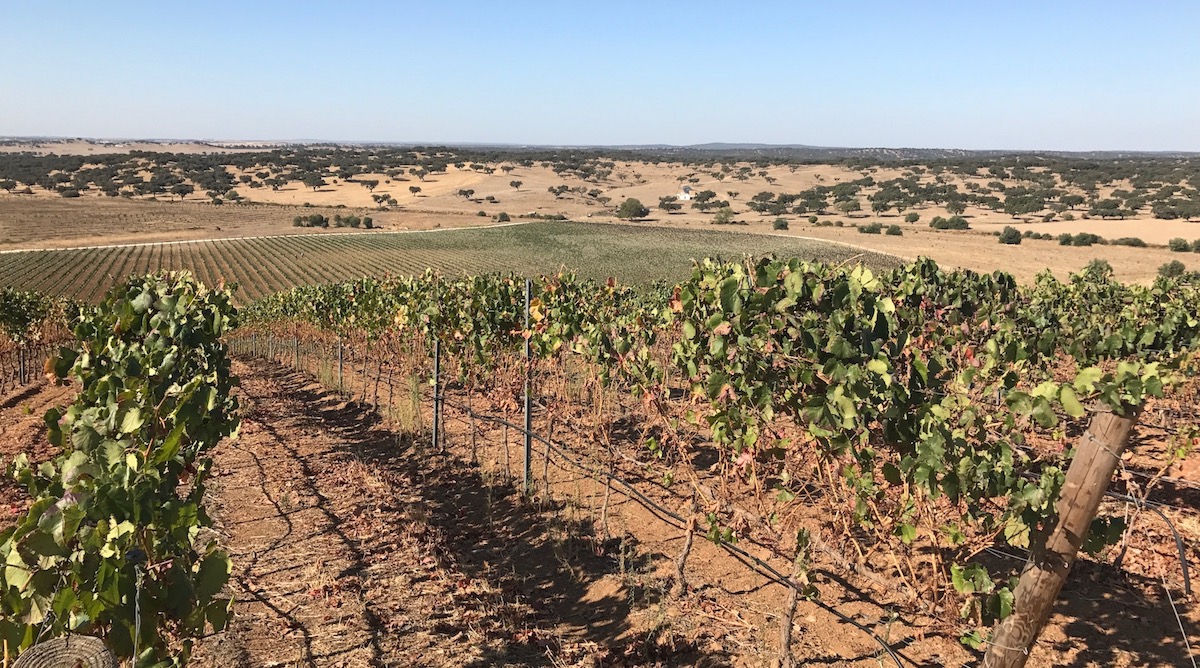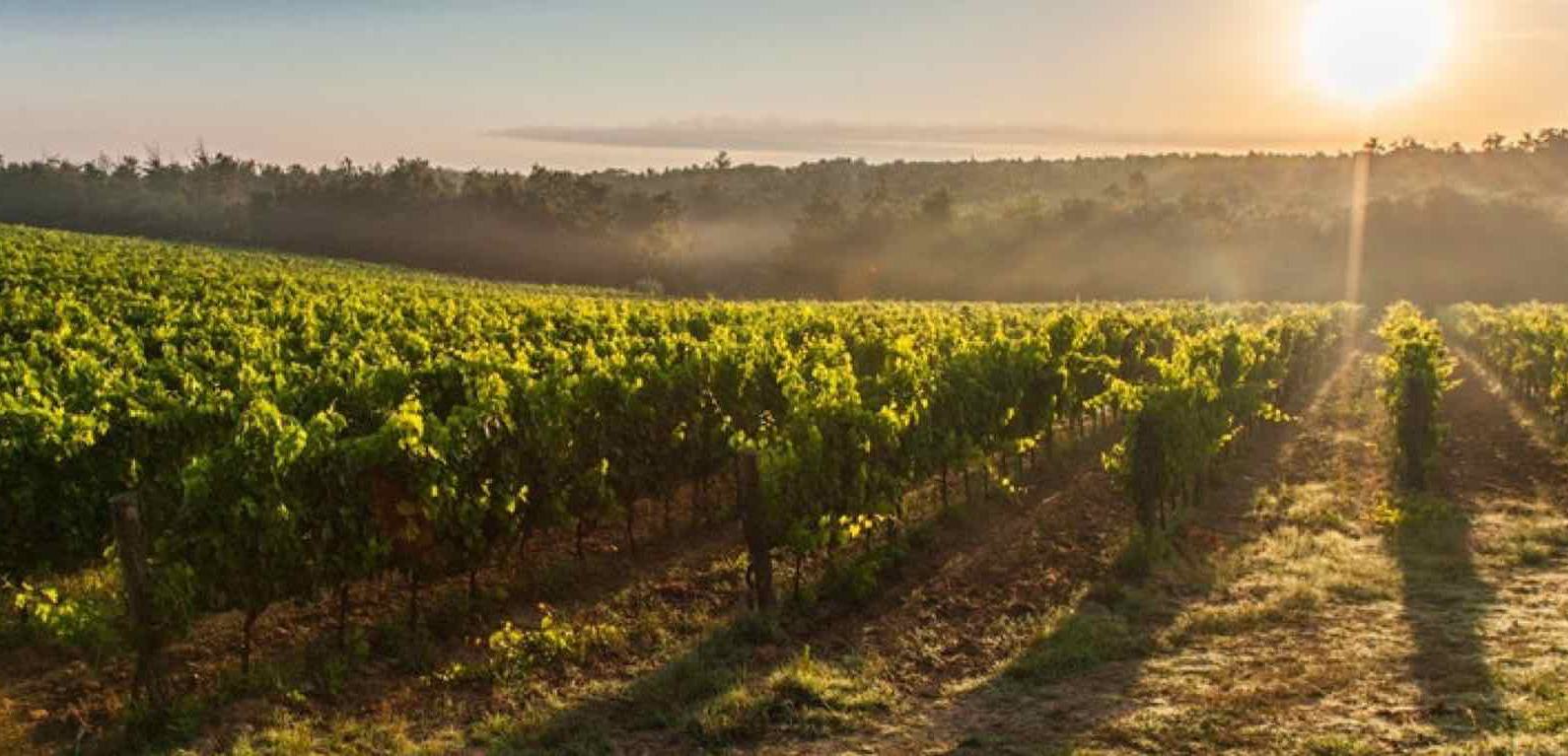
Alentejo is the largest wine region in Portugal and the source of a wealth of good quality wines from a multitude of different grape varieties. Red wines dominate in this sun scorched region, particularly from Touriga Nacional and Allicante Bouchet, but there are are also plenty of examples of respectable whites produced too.

Alentejo is one of the biggest wine regions in [Portugal](/country/portugal), making up almost a third of the country. Known for their big, rich and almost hedonstic levels of fruit and oak, the wines are incredibly popular throughout [Portugal](/country/portugal) and the region benefits from a substantial market share. Much of the region is characterised by moderate hillsides, a sort of gentle patchwork of rolling vineyards. Towards the North East however, close to the [Spanish](/country/spain) border, the São Mamede mountains emerge to create a slightly different microclimate. Here the wines are slightly fresher, benefiting from higher altitude. To the north of the region the terrain changes slightly. Altitude rises towards 300 metres making the town of Portoallegre one of the most desirable towns to purchase grapes from. The larger fluctuations between night and day temperatures mean those purchasing grapes are often desperate to find material with more freshness and acidity and depending on the variety some aromatic character. While there are some excellent wines in the region, stylistically it's easy to generalise. The wines of Alentejo are characterised by plenty of sunshine making them big and bold with plentiful helpings of ripe fruit. Like most regions in [Portugal](/country/portugal), the art of blending is pursued most. In terms of quality classifications, the region hangs its wines on two different hooks. In recent years there has been a lot of confusion amongst consumers about the criteria that separates the regional classification of [Vinho Regional Alentejano](/appellation/alentejo-vr) and the supposedly higher quality tier of [Alentejo DOC](/appellation/alentejo-doc). In 2017 however things were clarified a little clearer. While there are also subtle differences in the permitted yields, the main point of difference is a newly established production area for the DOC wines. To use this higher quality classification on the label, permitted grape varieties can only be cultivated in key municipalities. The theory goes that these areas, located more or less in the heart of region, are capable of producing wines with Alentejo typicity. While it’s not a completely authoritative guide to the best wines, deeming for example the exceptional wines of [Herdade das Servas](/producer/herdade-das-servas) outside of the DOC scope, it does at least represent a simple and accessible starting point for consumers to new to the region. The most interesting white grape variety is [Antão Vaz](/antao-vaz), known for its potential for abundant tropical flavours and crisp acidity. In reality though there are a wealth of varieties, both [Portuguese](/country/portugal) and international that either individually or blended make up a fantastically diverse region. Red wines are often [Tempranillo](/tempranillo), known here as [Aragonez](/aragonez), but others such as [Trincadeira](/trincadeira), Castelão and Alfrocheiro can be found. Like many regions, certain varieties are used to finesse wines but are rarely found alone, Moreto, Tinta Caiada and Tinta Grossa for example. While there are plenty of wines worth hunting down in the Alentejo, many of them suffer from excessive weight. Grapes are often picked with too much sugar, the juice extracted at too high a temperature for much too long, and the resulting wine treated with far too much oak. Temperatures are the big challenge and producers will point to the need to achieve phenolic ripeness before considering things like body and alcohol. The result is a large selection of wines that struggle for balance. Alentejo undoubtedly offers plenty of potential, but if you're into fresher wines, randomly pulling a wine off the shelf is likely to be a frustrating exercise. One of the challenges for the region, at least in terms of creating a wider understanding of the top wines, has been a lack of consciousness around the eight sub regions that make up the the appellation, all of which showcase different terroir. Sub-zones rarely appear on the label for fear of adding confusing information and this is unfortunately a mistake. The opposing side of this argument however points to the heavy use of oak in the cellar. In reality most wines experience an extended period in new wood and consequently reflect these cellar choices far more then any unique vineyard characteristics. Internationally, Alentejo is still a developing wine region brand and far from being sure of itself to the point where village names are introduced en masse.

Alentejo DOC is often the top expression of wines from the Alentejo region. The best are full bodied, incredibly aromatic, soft and smooth with an uncanny ability to be enjoyed young or indeed improve with age.
Read more ▸
Altentejo is the catch all regional appellation for wine made in the Alentejo.
Read more ▸